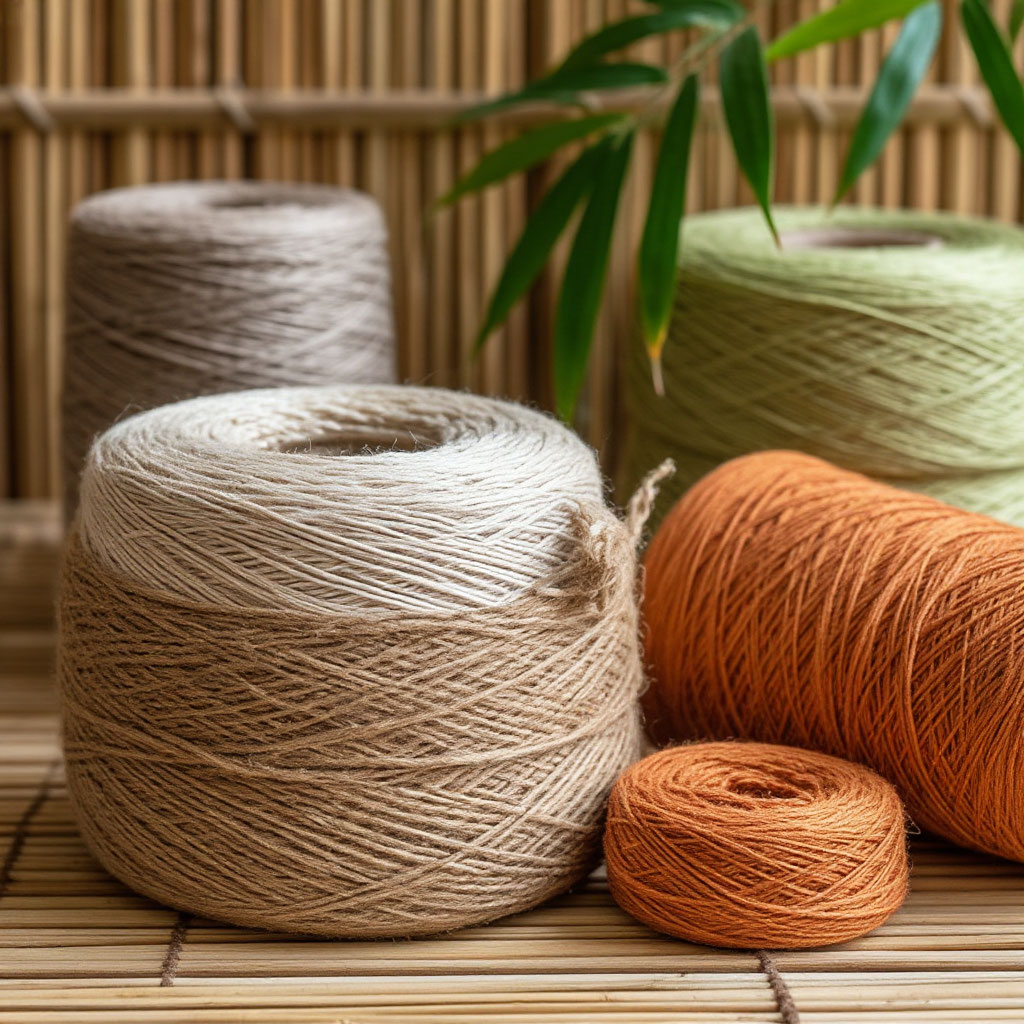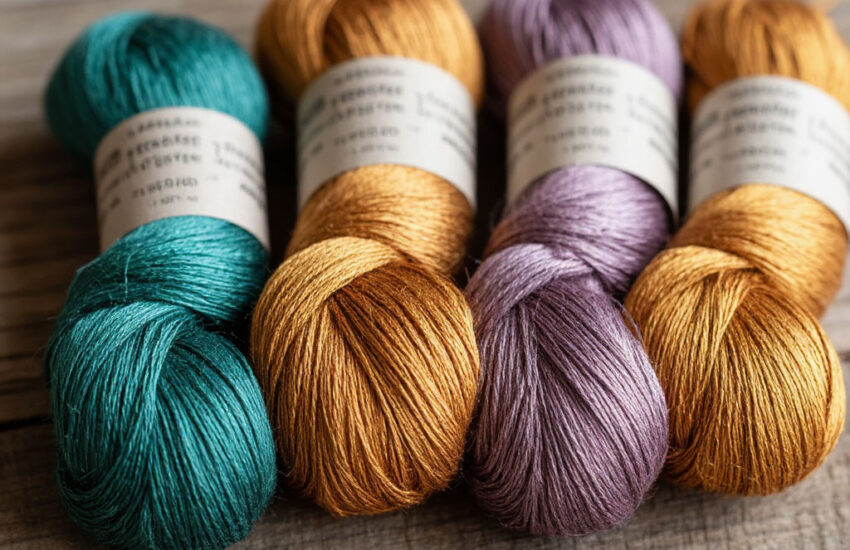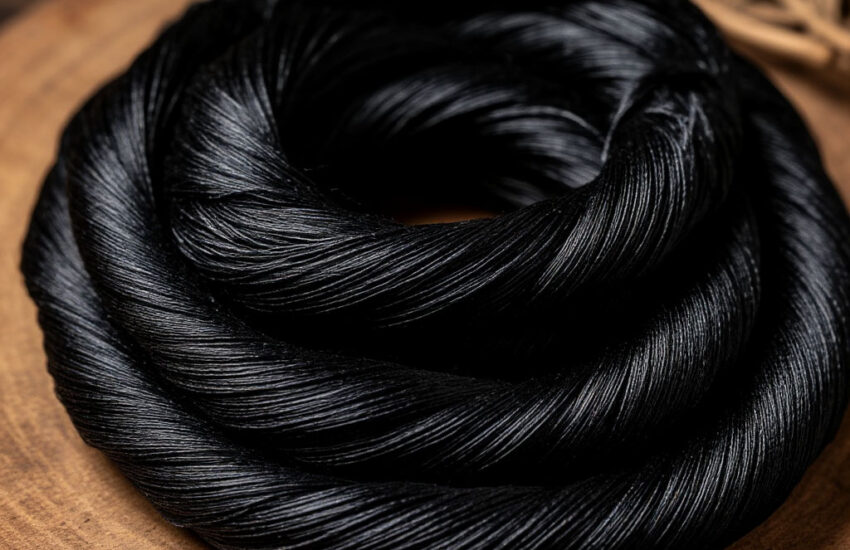Bamboo Fabric and Yarn: Soft, Sustainable, and Antibacterial
Contents
- 1 Bamboo Fabric: Soft, Sustainable, and Antibacterial (The Complete Breakdown)
- 2 This means:
- 3 How Bamboo Yarn Is Made (And Is It Really Green?)
- 4 Bamboo vs. Cotton: Which Is Better for the Planet?
- 4.1 Round 1: Water Wars – The Thirsty Truth
- 4.2 Round 2: Chemical Footprint – Pesticides vs. Natural Resistance
- 4.3 Round 3: Land Use – Space Efficiency Champion
- 4.4 Round 4: Carbon Capture – The Climate Change Fighter
- 4.5 Round 5: Fabric Performance – Comfort Showdown
- 4.6 The Verdict: And the Winner Is…
- 5 Best Knitting Projects for Bamboo Yarn
In today’s eco-conscious world, where fast fashion’s environmental toll is impossible to ignore, bamboo fabric and yarn have emerged as a game-changing alternative. But what makes this material so special? Is it really as soft as they say? Does it live up to its eco-friendly bamboo textiles reputation? And most importantly—why should you make the switch?
Whether you’re a knitter searching for the perfect sustainable yarn, a fashion lover tired of synthetic fabrics, or just someone who cares about reducing their environmental footprint, this deep dive into bamboo fabric and yarn will give you all the answers. From its unmatched softness to its natural antibacterial properties, we’ll explore why bamboo is taking the textile world by storm—and why it might just become your new favorite fabric. By the end of this article, you’ll be able to download a checklist — a simple guide to working with bamboo fabric and yarn for soft, sustainable, and versatile projects.
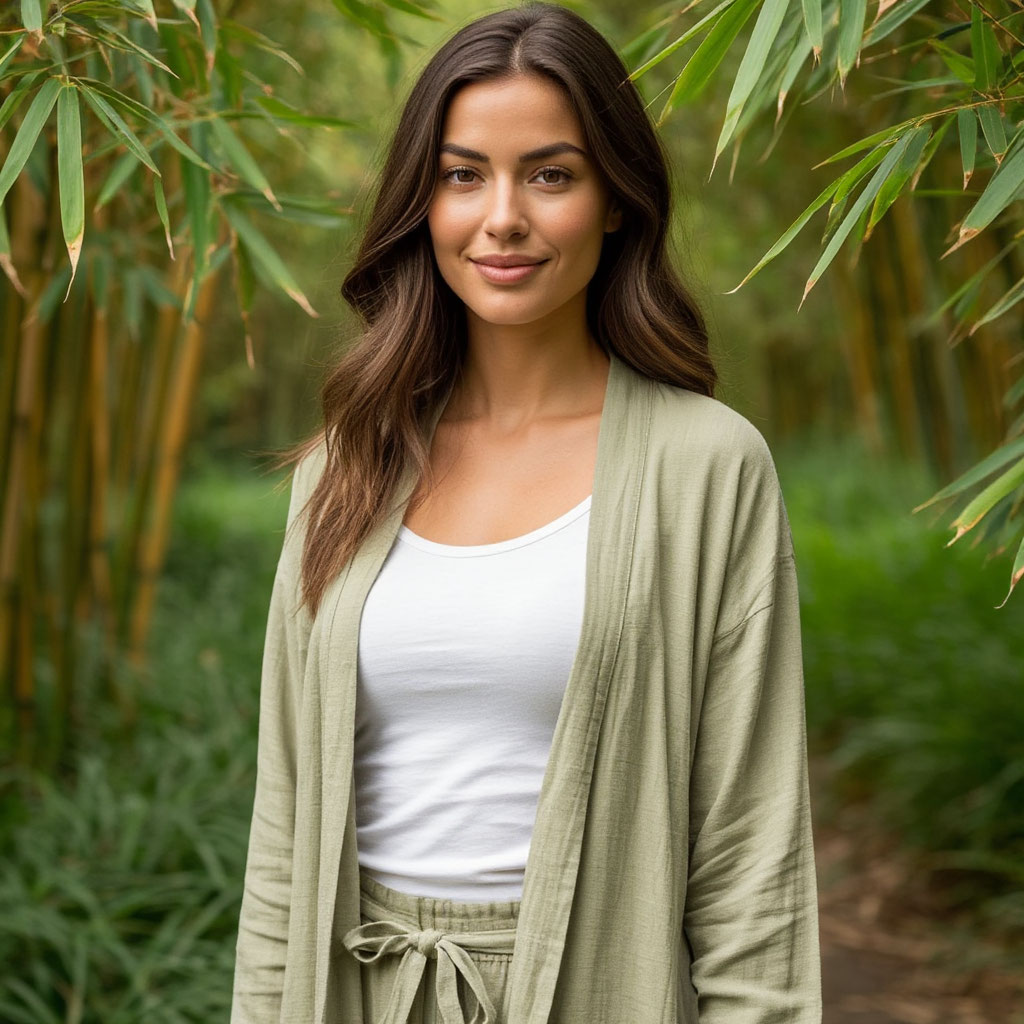
Bamboo Fabric: Soft, Sustainable, and Antibacterial (The Complete Breakdown)
Why Bamboo Feels Like Luxury (Without the Price Tag)
Close your eyes and imagine the softest fabric you’ve ever touched. Was it cashmere? Silk? What if I told you bamboo fabric and yarn rivals—and sometimes even surpasses—those premium materials?
Unlike stiff, scratchy synthetics or even some organic cottons, bamboo has a naturally silky drape that feels incredible against the skin. It’s no wonder high-end brands are using bamboo fabric for everything from luxury bedding to premium activewear. But softness is just the beginning.
The Science Behind Bamboo’s Antibacterial Superpowers
One of the biggest benefits of bamboo clothing is its natural resistance to bacteria and odor. How? Bamboo contains a bio-agent called bamboo kun, which prevents microbial growth.
This means:
- No more stinky gym clothes – Bamboo workout wear stays fresher longer.
- Ideal for sensitive skin – Perfect for babies, eczema sufferers, or anyone prone to irritation.
- Less washing = longer lifespan – Since it resists odors, you can wear it more between washes.
Breathability & Moisture Control: Why Athletes & Hot Sleepers Love It
Ever woken up drenched in sweat? Or suffered through a workout in a shirt that sticks to your back? Bamboo fabric solves both problems with natural temperature regulation.
- Wicks moisture – Pulls sweat away from skin 40% faster than cotton.
- Thermoregulating – Keeps you cool in summer, cozy in winter.
- Ultra-breathable – Lets air circulate, reducing that clammy feeling.
No wonder it’s the top choice for yoga leggings, socks, and even bedding!
The Sustainability Factor: How Bamboo Outshines Other Fabrics
Now, let’s talk about the eco-friendly bamboo textiles claim. Is bamboo really that green?
Spoiler: Yes. Here’s why:
- Grows like a weed (literally) – Some species grow 3 feet per day with no pesticides.
- Uses far less water – Unlike cotton (which guzzles 10,000+ liters per kg), bamboo thrives on rainwater.
- Regenerates soil – Its roots prevent erosion and even improve soil quality over time.
But (and this is a big but)—not all bamboo fabric is created equal. The “how bamboo yarn is made” process matters (more on that later).
Bamboo vs. Cotton: A Quick Sneak Peek
Before we dive deeper, let’s settle one debate: bamboo vs. cotton—which is better?
- Softness? Bamboo wins (especially after multiple washes).
- Breathability? Bamboo again.
- Eco-footprint? Bamboo by a landslide.
But don’t take my word for it—try a bamboo t-shirt and feel the difference yourself.
Up Next: How Bamboo Yarn Is Made (And Is It Really Green?)
Now that you’re hooked on bamboo fabric and yarn, let’s peel back the curtain on how it’s made. Is the process as eco-friendly as the plant itself? Stay tuned—because the answer might surprise you.
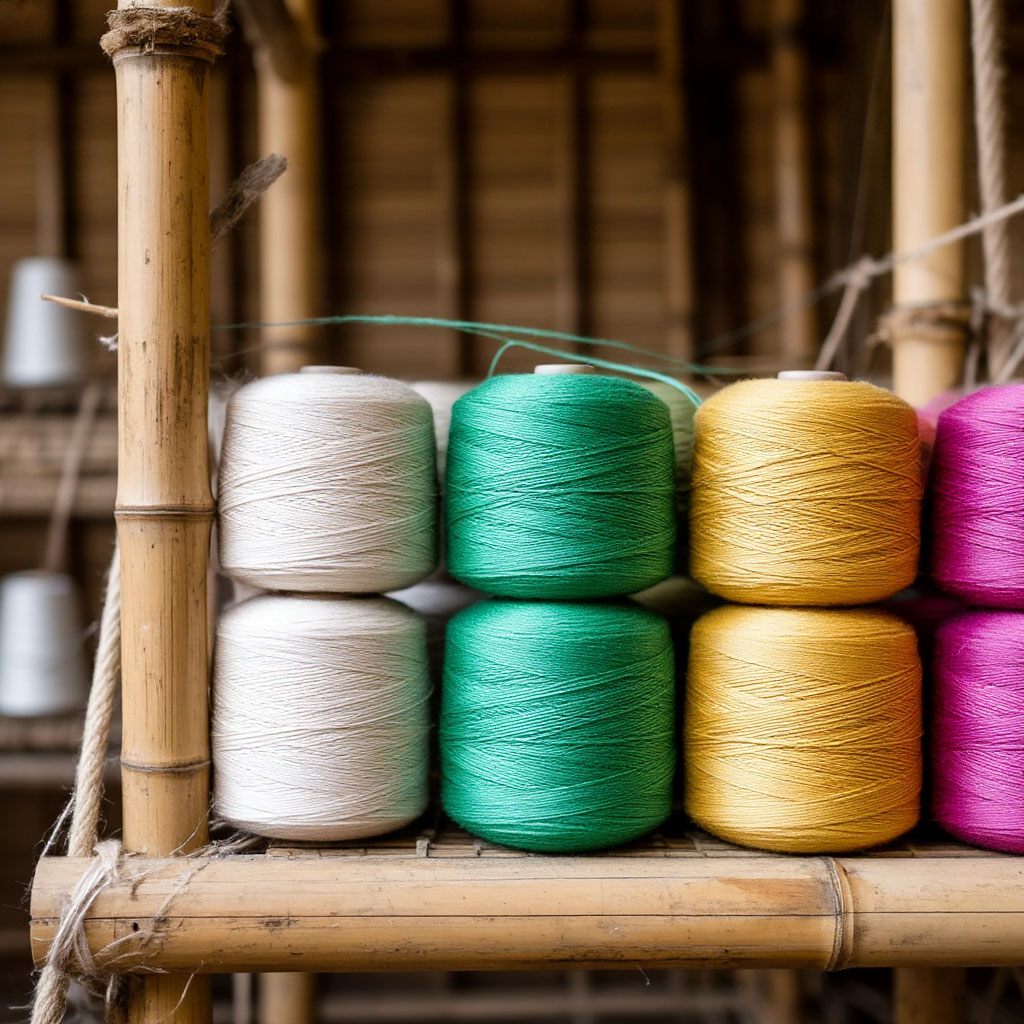
How Bamboo Yarn Is Made (And Is It Really Green?)
Let’s get real about bamboo yarn production – because not all that glitters is gold. Sure, we’ve raved about the benefits of bamboo clothing, but how does this miracle fiber actually go from tough grass stalks to buttery-soft yarn? Buckle up, eco-warriors, because we’re about to take a deep (and honest) dive into the process.
From Bamboo Forest to Fabric: The Naked Truth
Method #1: The Mechanical Process (The Gold Standard)
This is the Beyoncé of bamboo production – flawless but rare. Here’s how it works:
- Crushing: Bamboo stalks are physically broken down into a mushy pulp
- Natural Enzymes: The pulp gets bathed in eco-friendly enzymes (think of it as a bamboo spa day)
- Spinning: The softened fibers are combed and spun into yarn
Why we love it:
- No nasty chemicals
- Minimal environmental impact
- Produces the highest quality bamboo fabric and yarn
The catch:
- Labor-intensive (translation: more expensive)
- Hard to find (only about 5% of bamboo textiles use this method)
Method #2: The Chemical Process (The Ugly Truth)
This is where things get… complicated. Most “eco-friendly bamboo textiles” on the market actually go through this:
- Chemical Bath: Bamboo gets dunked in sodium hydroxide (lye) and carbon disulfide
- Viscose Soup: The plant material dissolves into a gooey cellulose solution
- Extrusion: The solution gets forced through tiny holes to make fibers
The good news:
- Cheaper to produce
- Makes super soft fabric (almost identical to the mechanical version)
The bad news:
- Uses toxic chemicals
- Can pollute waterways if not properly managed
- Often greenwashed as “natural” when it’s technically semi-synthetic
Wait… Is Bamboo Yarn Actually Eco-Friendly?
Here’s the tea: bamboo vs. cotton in terms of eco-friendliness isn’t black and white.
The Bright Side:
Bamboo grows like crazy without pesticides
Uses way less water than cotton
Biodegradable at end of life
The Dark Side:
Most bamboo fabric is chemically processed
Some factories don’t properly recycle chemicals
Transportation emissions (if shipped from Asia)
Pro Tip: Look for:
- Oeko-Tex certified bamboo
- Brands using closed-loop processing
- “Mechanically processed” bamboo (the holy grail)
The Verdict: Should You Buy It?
Absolutely – but be smart about it. While not perfect, bamboo fabric and yarn are still miles better than polyester or conventional cotton. Just remember:
- Check certifications
Support transparent brands
Consider it an upgrade from synthetic fabrics
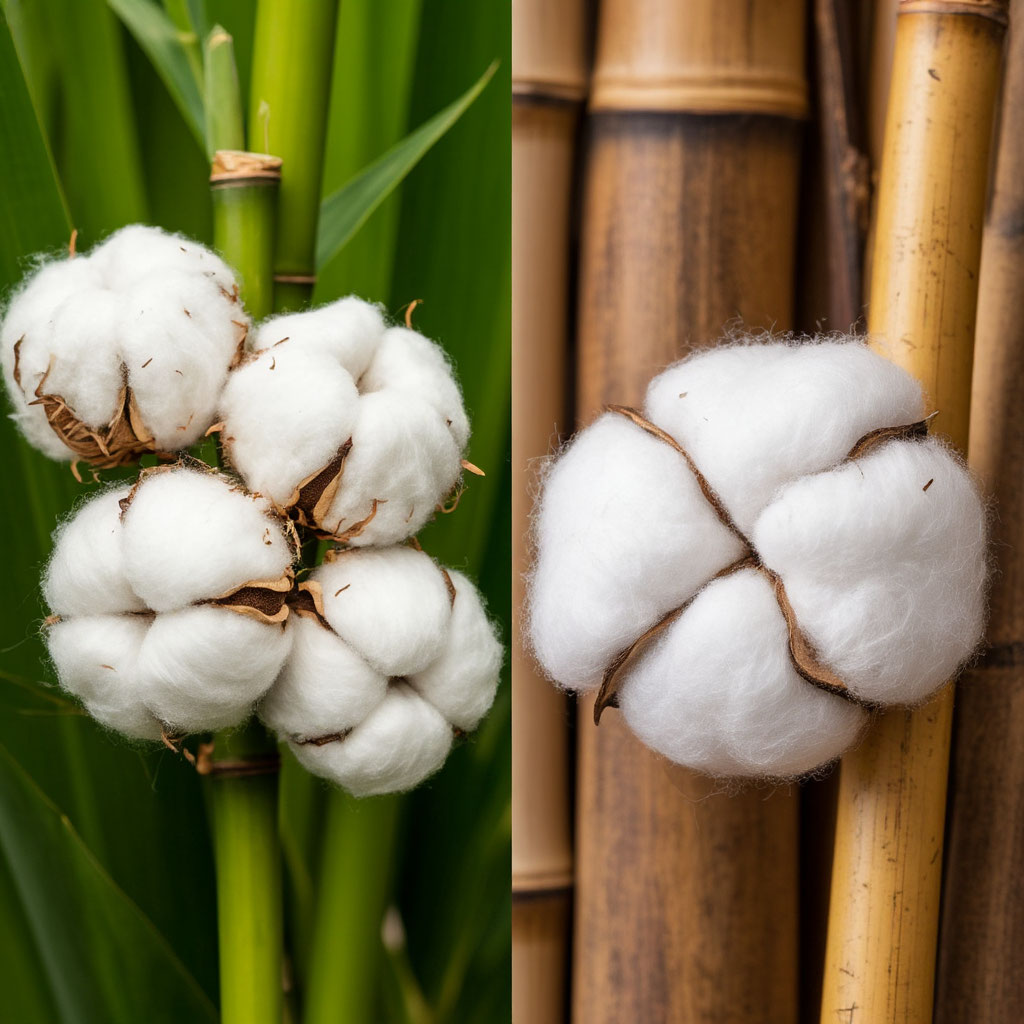
Bamboo vs. Cotton: Which Is Better for the Planet?
Let’s settle this once and for all – when it comes to bamboo fabric and yarn versus good old cotton, which textile truly deserves a spot in your eco-conscious wardrobe? Grab your reusable water bottle, because we’re about to break down this sustainability face-off with some hard-hitting facts.
Round 1: Water Wars – The Thirsty Truth
Here’s where bamboo vs. cotton gets really interesting. Cotton might feel natural, but its water appetite is downright shocking:
- Cotton’s Dirty Secret: Producing just one cotton t-shirt gulps down 2,700 liters of water – that’s three years’ worth of drinking water for one person!
- Bamboo’s Advantage: Bamboo thrives on rainwater alone, needing no artificial irrigation. It grows like… well, a weed.
Why This Matters: In a world where water scarcity affects billions, choosing eco-friendly bamboo textiles could literally help save our planet’s most precious resource.
Round 2: Chemical Footprint – Pesticides vs. Natural Resistance
Ever wonder why organic cotton costs so much more? Here’s the ugly truth:
- Conventional Cotton: Soaks up 16% of the world’s insecticides and 7% of pesticides – nasty stuff that harms farmers and ecosystems.
- Bamboo’s Superpower: Naturally pest-resistant, meaning zero pesticides needed. It’s like the Hulk of the plant world – nothing messes with it.
Pro Tip: If you must buy cotton, always go organic. But for true benefits of bamboo clothing, the choice is clear.
Round 3: Land Use – Space Efficiency Champion
Let’s talk real estate – fabric style:
- Cotton: Requires 2.5% of the world’s farmland but produces just 1% of global fiber.
- Bamboo: Yields 10 times more fiber per acre than cotton. Some species grow 3 feet per day – you can practically watch it grow!
Mind Blown Yet? Bamboo’s incredible growth rate makes it one of the most sustainable crops on Earth.
Round 4: Carbon Capture – The Climate Change Fighter
Here’s where bamboo fabric and yarn really shine:
- Bamboo Forests: Absorb 5 times more CO2 than equivalent stands of trees.
- Cotton Fields: Actually contribute to soil carbon loss in conventional farming.
The Big Picture: By choosing bamboo, you’re essentially wearing carbon sequestration – how cool is that?
Round 5: Fabric Performance – Comfort Showdown
Now let’s talk about what really matters – how these fabrics feel and perform:
- Softness: While high-quality cotton is soft, bamboo fabric has that luxurious, silky handfeel that gets better with every wash.
- Breathability: Bamboo outperforms with 40% better moisture-wicking – goodbye sweaty back!
- Durability: Bamboo fibers are naturally stronger, meaning your clothes last longer.
Real Talk: Once you try bamboo sheets or underwear, you’ll never go back to cotton.
The Verdict: And the Winner Is…
While organic cotton has its place, when we look at how bamboo yarn is made and its overall environmental impact, bamboo takes the crown for:
- Water conservation
- Chemical-free cultivation
- Land efficiency
- Carbon sequestration
- Performance benefits
For true eco-friendly bamboo textiles, look for mechanically processed options. But even chemically processed bamboo beats conventional cotton in sustainability metrics.
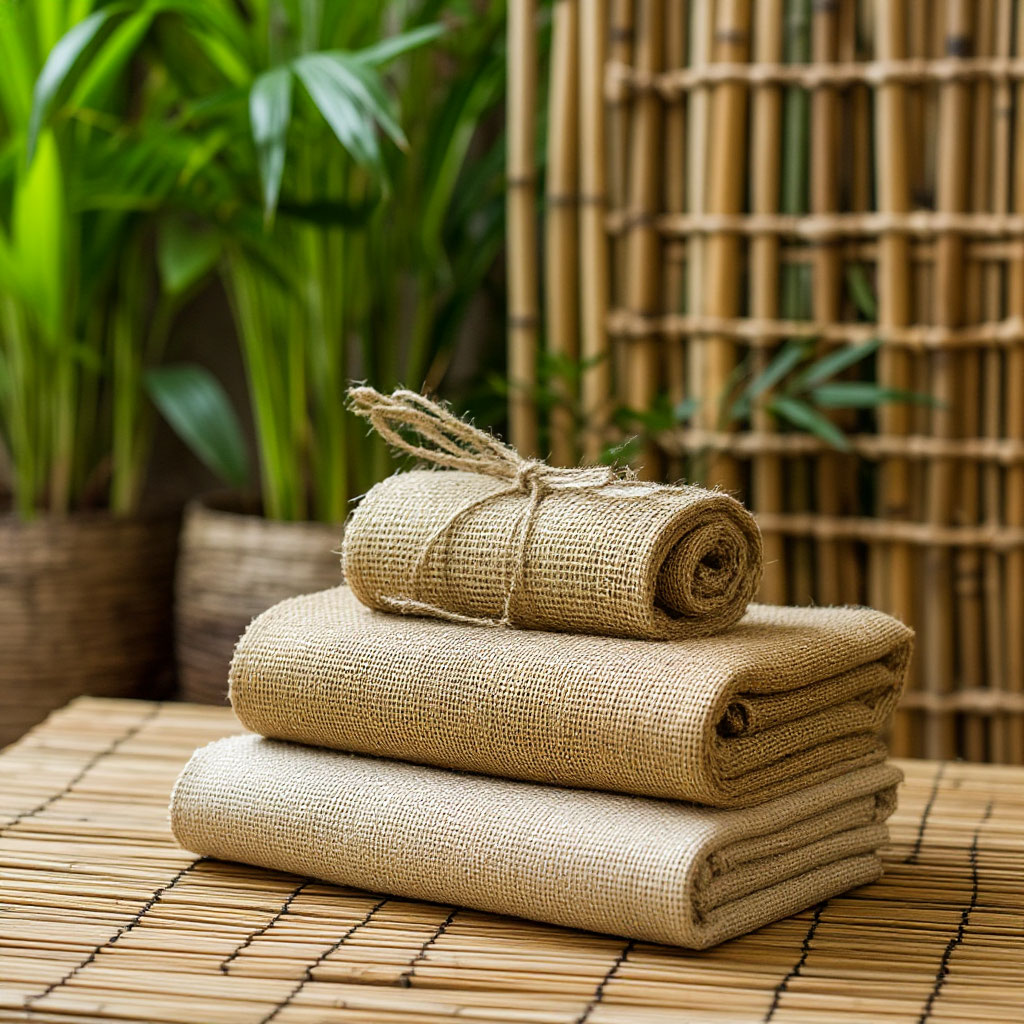
Best Knitting Projects for Bamboo Yarn
Now that we’ve geeked out about why bamboo fabric and yarn are total game-changers, let’s get to the fun part – what can you actually make with this miracle fiber? Whether you’re a seasoned knitter or just starting out, bamboo yarn will become your new obsession. Here’s why:
Why Bamboo Yarn is a Knitter’s Dream Come True
Before we dive into patterns, let’s talk about what makes bamboo yarn so special for crafters:
- Silky Smooth Glide: Your needles will move like butter through this yarn
- Drape Goddess: Creates fluid, elegant fabrics that cling beautifully
- Color Brilliance: Takes dye exceptionally well for vibrant projects
- Breathable Bliss: Perfect for items that touch skin
- Eco-Guilt-Free: You’re literally crafting a better planet
1. Summer Essentials That Actually Keep You Cool
The Perfect Bamboo Tank Top
Imagine a top so light it feels like wearing air – that’s what happens when you knit with bamboo fabric and yarn. Try:
- Simple stockinette stitch for a sleek look
- Lace panels for breathable elegance
- Ribbed edges for structure
Pro Tip: Use 3.5-4mm needles for the ideal drape-to-structure ratio
Beach Cover-Ups with Resort-Worthy Vibes
Knit an open-weave kimono or sarong-style wrap that:
- Dries faster than cotton at the pool
- Resists that musty beach bag smell
- Gets softer with every saltwater soak
2. Next-Level Baby Knits That Moms Will Fight Over
The Ultimate Bamboo Baby Blanket
Combine eco-friendly bamboo textiles with these genius features:
- Honeycomb stitch for breathability
- Generous 36″x36″ size for tummy time to toddler years
- Neutral tones that hide stains (because let’s be real)
Why Parents Love It: Naturally antibacterial properties mean less washing – every new parent’s dream
Bamboo Baby Booties That Stay On
Finally – baby shoes that don’t constantly fall off! The secret:
- Ribbed ankle cuffs
- Silky texture prevents irritation
- Machine washable (hallelujah)
3. Home Luxuries That Upgrade Your Space
Bamboo Throw Blanket You’ll Fight Over
Create a couch staple that:
- Regulates temperature year-round
- Feels like a hug from a cloud
- Looks expensive (but costs pennies to make)
Stitch Recommendation: Basketweave for texture + warmth
Pillow Covers That Outperform Store-Bought
Knit envelope-style covers that:
- Resist dust mites naturally
- Stay cool all night
- Wash beautifully without pilling
4. Accessories That Make You Look Like a Pro
Market Bag That Won’t Stretch Out of Shape
Unlike cotton that sags when loaded, bamboo:
- Maintains structure
- Handles heavy farmer’s market hauls
- Looks chic even when empty
Design Hack: Add a linen stitch base for extra durability
Bamboo Socks You’ll Want to Live In
Forget scratchy wool – bamboo socks offer:
- Seamless comfort
- Odor resistance
- Temperature regulation
Heel Tip: Use a reinforced heel stitch for longevity
5. Showstopper Pieces That Get Compliments
Lace Shawl That Floats Like a Cloud
The benefits of bamboo clothing shine in lacework:
- Incredible stitch definition
- Lightweight warmth
- Drapes like liquid
Pattern Pairing: Try a feather-and-fan variation
Bamboo Sweater That Breathes
Finally – a sweater you can wear indoors without sweating! Features:
- Relaxed fit for airflow
- 3/4 sleeves for versatility
- Subtle sheen that elevates basics
Bamboo Yarn Care: Make Your Projects Last
To keep your bamboo fabric and yarn creations looking fabulous:
- Hand wash in cool water (or gentle machine cycle)
- Lay flat to dry (no wringing!)
- Store folded, not hung
Common Mistake: Avoid high heat – it can weaken fibers over time
Where to Buy Quality Bamboo Yarn
Look for:
- Oeko-Tex certified options
- Brands that disclose processing methods
- Yarns with a blend of bamboo and organic cotton for structure
From its silky-soft feel to its planet-friendly footprint, bamboo fabric and yarn check all the boxes. Whether you’re sewing eco-friendly bamboo textiles or knitting a cozy scarf, this material delivers comfort, sustainability, and performance in one package.
So next time you’re choosing between bamboo vs. cotton, remember: bamboo isn’t just a trend—it’s the future of sustainable fashion. Ready to make the switch? Your skin (and the planet) will thank you. You can now download a bamboo fabric and yarn checklist — a practical tool to help you choose, care for, and design with this eco-friendly material in everyday sewing and home projects.
